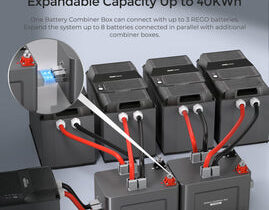Skin tags are common benign skin growths that can appear on various parts of the body. While they are harmless, many people prefer to remove them for cosmetic reasons or because they cause irritation. In recent years, skin tag removal devices have gained popularity as a convenient and effective way to remove these growths safely at home. In this article, we’ll explore the benefits of using a skin tag removal device, how it works, different types available, potential risks, and tips for safe and effective removal.
Understanding Skin Tags
Skin tags, medically known as acrochordons, are small, soft, flesh-colored growths that typically hang off the skin by a thin stalk. They are composed of blood vessels and collagen fibers covered by skin. While skin tags can develop anywhere on the body, they are most commonly found in areas where the skin rubs against itself, such as the neck, armpits, groin, and eyelids.
How Skin Tag Removal Devices Work
Skin tag removal devices typically work by cutting off the blood supply to the skin tag, causing it to shrink and eventually fall off. There are various types of removal devices available, including ones that use freezing, cutting, or burning methods. Some devices utilize advanced technologies such as radiofrequency or high-frequency electrical currents to remove skin tags safely and effectively.
Types of Skin Tag Removal Devices
There are several types of skin tag removal devices on the market, ranging from over-the-counter solutions to professional-grade devices used in dermatology clinics. Over-the-counter options often include freeze-off treatments, skin tag removal creams, and specialized removal devices designed for home use. Professional-grade devices used in clinics may use advanced technologies such as cryotherapy, electrosurgery, or laser therapy for precise and efficient removal.
Potential Risks and Considerations
While skin tag removal devices are generally safe when used correctly, there are some potential risks and considerations to keep in mind. Using improper techniques or failing to follow instructions carefully can lead to complications such as infection, scarring, or skin discoloration. It’s essential to consult with a healthcare professional before attempting to remove skin tags, especially if they are large, located in sensitive areas, or causing discomfort.
Tips for Safe and Effective Removal
To ensure safe and effective removal of skin tags using a removal device, it’s essential to follow these tips:
- Cleanse the area thoroughly before treatment to reduce the risk of infection.
- Read and follow the instructions provided with the removal device carefully.
- Test the device on a small area of skin first to check for any adverse reactions.
- Use caution when treating skin tags near the eyes, genitals, or other sensitive areas.
- If you experience any unusual symptoms or complications after treatment, seek medical attention promptly.
Conclusion
Skin tag removal device offer a convenient and effective solution for removing unwanted skin tags safely at home or in a clinical setting. By understanding how these devices work, the different types available, potential risks, and tips for safe removal, individuals can make informed decisions about managing their skin health. As with any medical procedure, it’s essential to consult with a healthcare professional before attempting to remove skin tags, especially if you have any underlying health conditions or concerns. With proper care and attention, skin tag removal devices can help improve both the appearance and comfort of your skin.













